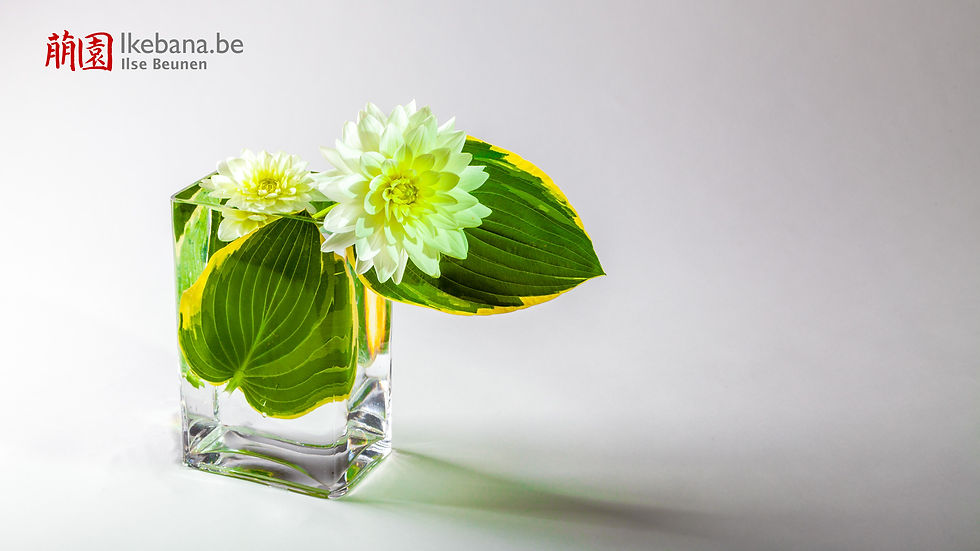Straight but Not Straight | Ikebana Stories
- Ben Huybrechts

- Sep 3
- 2 min read
by Ben
Marketeer, Manager, Photographer, and Husband
Just for a couple of weeks, I’ve been following an online Shaolin warrior training. It already did wonders for my blood test results, but that story doesn't belong in an ikebana newsletter. What I want to share today is a moment that stopped me in my tracks.
During a form practice the Shaolin monk said: "Straight but not straight." The phrase hit me like a gong. Not just because it was cryptic or poetic, but because it echoed something I had heard before, in a completely different setting.

More than ten years ago, Ilse and I were on holiday in a remote corner of Normandy, working on her first book, Exploring Ikebana. We had long days of writing and bickering over angles and lengths. One particular discussion involved the correct placement of shin, the main branch in an ikebana arrangement.
Ilse told me it should be placed at a 15-degree angle. But I was the engineer in the room. "Fifteen degrees from where?" I asked, pulling out protractors and right angles.

Ilse looked at me, puzzled. How could someone be so precise and yet miss the point entirely? After a long quarrel, with me lecturing geometry and Ilse slowly losing her temper, she paused and then said gently but firmly: "You place shin straight, but not straight!"
Back then, I struggled to understand. Now, years later, in the middle of a martial arts class, it landed.
“Straight but not straight" at first it sounds like a contradiction. After all, straight is straight. There’s only one direction that qualifies. The Shaolin monk, clearly used to teaching engineers, added a gentle explanation. "The arm is meant to be extended, but just a little bit bent".
That subtle adjustment, the one you learn not through tools but through time, felt oddly familiar. How much is a little bit? That’s the part you don’t measure. You practice, observe, and one day it simply settles into place.

Even when the textbooks say that the main branch should be placed at 15 degrees, as they do in the first basic Sogetsu arrangement, it’s not about exact measurement.
Absolute straightness lacks character. It feels rigid, lifeless. A branch placed “straight but not straight” brings movement, energy, and breath to the design. It avoids becoming mechanical. However no teacher walks around with a protractor. They rely on the eye, the hand, and a sense that builds over time.
It’s probably no coincidence that both ikebana and Shaolin come from the East, disciplines shaped by form but animated by feeling. In both, true mastery begins when you’ve internalized the rules and start sensing the rhythm beneath them.

Precision without presence is just math. Presence without structure is chaos. Somewhere in between lies the wisdom of “straight but not straight.”



Comments